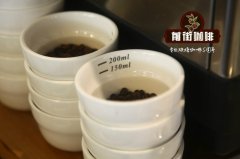Murang'A Kenya October to December is the main season
Professional coffee knowledge exchange more coffee bean information please follow the coffee workshop (Wechat official account cafe_style)
Kenya MURANG'A (Mu Zentu)
MURANG'A: there are about 100000 coffee farmers in this district of the central province. This inland producing area was the place of settlement chosen by the first missionaries because Portugal banned them from living in coastal areas. This is also another German producing area that benefits from volcanic soil, with more small coffee farmers than manors.
Altitude: 1350 to 1950 m
Harvest time: October? December (main production season), June? August (by-product season)
Varieties: SL-28, SL-34, Ruiru11, Batian
Brief introduction of producing area
Mulanka producing area is located in the foothills of Kenya (Mount Kenya), close to the Nyeri producing area. The fertile volcanic soil (volcanic loam) of Mount Kenya provides sufficient nutrients for coffee growth. There are two rainy seasons in this area every year, and the typical rainfall occurs in March-April and November-December respectively. The annual precipitation is abundant, and the coffee trees hardly need artificial irrigation. There are two harvest seasons in the producing area, the main harvest season (Main Harvest) from April to June and the secondary harvest season (Fly Crop) from October to December.
There are several coffee processing plants in the Mulanka producing area, and in principle, coffee farmers can choose nearby. Because of the way raw beans are sold in Kenya, coffee processing plants that can sell high prices tend to be more popular with farmers. The Tangkashi processing plant is one of the processing plants owned by the Iyego Coffee Growers Cooperative Society, which is mainly responsible for processing coffee from nearby small family farms.
The AA level represents the size of raw bean particles, which is a 17-18 screen and has strict control over defective beans. The AB level represents that raw bean granules are suitable for sieve 15-16, and 10% of beans under 15 mesh are allowed.
END
Important Notice :
前街咖啡 FrontStreet Coffee has moved to new addredd:
FrontStreet Coffee Address: 315,Donghua East Road,GuangZhou
Tel:020 38364473
- Prev

Kenya NYERI coffee bean growing environment Nieli coffee bean flavor
For more information on coffee beans, please follow the coffee workshop (Wechat official account cafe_style) NYERI (Nieli) NYERI: Nyeri in central Kenya is home to the extinct volcano Mount Kenya. The red soil in this area breeds the best coffee in Kenya. Agriculture is extremely important here; coffee is the most important crop. Made up of small farmers
- Next

Kenya KIRINYAGA Kirinaga producing area beans are very sour? Is the flavor partial to fruit?
For more information on coffee beans, please follow the coffee workshop (Wechat official account cafe_style) Kenya KIRINYAGA (Kirinaga) KIRINYAGA: the east side of the Nyeri producing area, which also benefits from volcanic soil. Coffee is usually produced by small farmers, and wet treatment plants also produce a lot of very high quality coffee, which is well worth a try. Altitude: 1300: 1
Related
- Detailed explanation of Jadeite planting Land in Panamanian Jadeite Manor introduction to the grading system of Jadeite competitive bidding, Red bid, Green bid and Rose Summer
- Story of Coffee planting in Brenka region of Costa Rica Stonehenge Manor anaerobic heavy honey treatment of flavor mouth
- What's on the barrel of Blue Mountain Coffee beans?
- Can American coffee also pull flowers? How to use hot American style to pull out a good-looking pattern?
- Can you make a cold extract with coffee beans? What is the right proportion for cold-extracted coffee formula?
- Indonesian PWN Gold Mandrine Coffee Origin Features Flavor How to Chong? Mandolin coffee is American.
- A brief introduction to the flavor characteristics of Brazilian yellow bourbon coffee beans
- What is the effect of different water quality on the flavor of cold-extracted coffee? What kind of water is best for brewing coffee?
- Why do you think of Rose Summer whenever you mention Panamanian coffee?
- Introduction to the characteristics of authentic blue mountain coffee bean producing areas? What is the CIB Coffee Authority in Jamaica?

